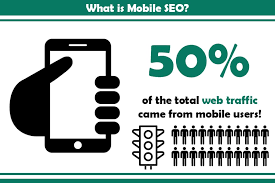How to Measure AMP Versus Non-AMP Code for Optimized Core Web Vitals Scores

What is AMP and how does it compare to non-AMP code? AMP is a Google-backed project that uses stripped down code (AMP HTML) to deliver static content pages. AMP pages load faster than regular HTML. In e-commerce, AMP is particularly relevant. Non-AMP code is also acceptable for optimized Core Web Vitals scores. So, which is better? Which is faster? How do you know?
AMP is an open-source framework
AMP is a new framework for mobile web development. The framework enables the use of streamlined HTML and CSS in web pages, ensuring that pages load quickly. AMP also allows third-party JavaScript to be used on AMP pages, removing HTTP requests from the critical rendering path. AMP also allows for responsive images. However, you must use a different set of CSS styles. To learn more about AMP,
check out the official project page.
The main benefit of using AMP is that it makes mobile pages load faster. It achieves this through a clever rendering trick where the page is already loading before the user visits it. In addition, AMP enforces design restrictions. For example, the framework only allows inline styles and keeps CSS and JS to a minimum of 50KB. This means that the page is fast, but the trade-off is a stripped-down experience that’s perfect for written content. One study showed that AMP pages load 2.5 times faster than normal mobile pages.
AMP is faster than non-AMP
Unlike traditional HTML, AMP pages load faster, look better, and get more Google crawling results. It can be a valuable tool for website owners looking to maximize their mobile SEO efforts. And, AMP pages can help your business increase conversions, and customer satisfaction, as well as improve SEO. But how can you implement AMP in your website? Read on to learn more about the benefits of AMP. And, most importantly, learn how to implement AMP in your website.
To make your AMP pages fast, publishers must use AMP-compliant libraries to ensure the pages load quickly. AMP pages are often stripped-down, and the original URL is not displayed to Google AMP viewers. But Google still stores the original URL, albeit under a button at the top of the page. This can be confusing for visitors, as well as difficult to identify. That’s where the AMP Real URL comes in handy. By serving an AMP page from a cache, it’s original URL is displayed in the browser navigation bar.
AMP is relevant for e-commerce
AMP, or Accelerated Mobile Pages, is a new standard for web content, and e-commerce sites can now get in on the action. As the platform gains more popularity, e-commerce companies can now adopt this new standard for their websites. There are some limitations, though, but the benefits far outweigh these issues. This article will examine the benefits of AMP for e-commerce businesses.
One notable example of an e-commerce website utilizing AMP is eBay. In 2016, eBay went live with 8 million AMP-enabled product pages and plans to continue implementing the AMP to improve its online shopping experience. While AMP was originally designed for static content, e-commerce sites need dynamic content, product listings, login capabilities, and checkout flows, all while still maintaining the highest level of web security. AMP supports all of these features and more, allowing e-commerce website owners to provide highly personalized content to their consumers.
AMP is not required for optimized Core Web Vitals scores
The AMP project has already shown signs of decline in terms of benefits, and it is unlikely that AMP will be required for optimized Core Web Vitals scores in the future. Instead, focus on optimizing your pages for FID, LCP, and CLS instead. These optimizations will help you create a user-friendly experience that will improve rankings and SEO. AMP is an indicator of the guidelines that Google uses to rank web pages.
In addition to improving user experience, Core Web Vitals is also ranking factors for Google Search. It is important to have good scores on all three of these metrics in order to be considered a high-quality page. The three Core Web Vitals is Cumulative Layout Shift, First Input Delay, and Largest Contentful Paint. Having good scores on all three of these factors will improve your website’s ranking potential.

